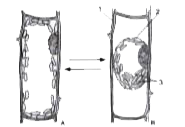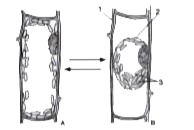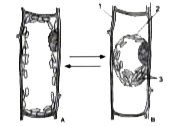Blood cells retain their normal shape in solution which are
hypotonic to blood
isotonic to blood
hypertonic to blood
equinormal to blood
The correct Answer is:B
To solve the question "Blood cells retain their normal shape in solution which are:", we need to understand the concepts of isotonic, hypotonic, and hypertonic solutions in relation to blood cells.
1. Define the Types of Solutions:
- Isotonic Solution: A solution where the concentration of solutes is equal inside and outside the cell. This means the water concentration is also equal, leading to no net movement of water.
- Hypotonic Solution: A solution with a lower concentration of solutes compared to the inside of the cell. Water moves into the cell, causing it to swell and potentially burst.
- Hypertonic Solution: A solution with a higher concentration of solutes compared to the inside of the cell. Water moves out of the cell, leading to shrinkage.
2. Understanding Blood Cells in Solutions:
- When blood cells are placed in an isotonic solution, the concentration of water is the same inside and outside the cell. Therefore, there is no net movement of water, and the blood cells maintain their normal shape.
- In a hypotonic solution, water moves into the cells, causing them to swell and possibly burst.
- In a hypertonic solution, water moves out of the cells, leading to shrinkage.
3. Conclusion:
- Since blood cells retain their normal shape in an isotonic solution, the correct answer to the question is isotonic to blood.
Final Answer:
Blood cells retain their normal shape in solutions that are isotonic to blood.
- Isotonic Solution: A solution where the concentration of solutes is equal inside and outside the cell. This means the water concentration is also equal, leading to no net movement of water.
- Hypotonic Solution: A solution with a lower concentration of solutes compared to the inside of the cell. Water moves into the cell, causing it to swell and potentially burst.
- Hypertonic Solution: A solution with a higher concentration of solutes compared to the inside of the cell. Water moves out of the cell, leading to shrinkage.
- When blood cells are placed in an isotonic solution, the concentration of water is the same inside and outside the cell. Therefore, there is no net movement of water, and the blood cells maintain their normal shape.
- In a hypotonic solution, water moves into the cells, causing them to swell and possibly burst.
- In a hypertonic solution, water moves out of the cells, leading to shrinkage.
- Since blood cells retain their normal shape in an isotonic solution, the correct answer to the question is isotonic to blood.
Blood cells retain their normal shape in solutions that are isotonic to blood.
Similar Questions
Knowledge Check
- Question 1 - Select One
Assertion : Cells vary greatly in their shape.
Reason : The shape of cell does not depend on the function they perform.AIf both assertion and reason are true amnd reason is the correct explanation of assertion.BIf both assertion and reason are true but reason is not the correct explanation of assertion.CIf assertion is true but reason is false.DIf both assertion and reason are false.
A cell that is spherical in shape is :
View SolutionBlood cells are suspended in the plasma.
View SolutionWhat is the normal shape of diaphragm?
View SolutionIn the given figures 'A' shows a cell in the normal state and 'B' shows the same cell after leaving it in a certain solution for a few minutes :

Was the solution isotonic, hypotonic or hypertonic in which the cell was kept ?View SolutionIn the given figures 'A' shows a cell in the normal state and 'B' shows the same cell after leaving it in a certain solution for a few minutes :

Describe the change which has occurred in the cell as seen in B.View SolutionIn the given figures 'A' shows a cell in the normal state and 'B' shows the same cell after leaving it in a certain solution for a few minutes :

Define the process which led to this condition.View SolutionThe cell becomes turgid in solution which is
View Solution

